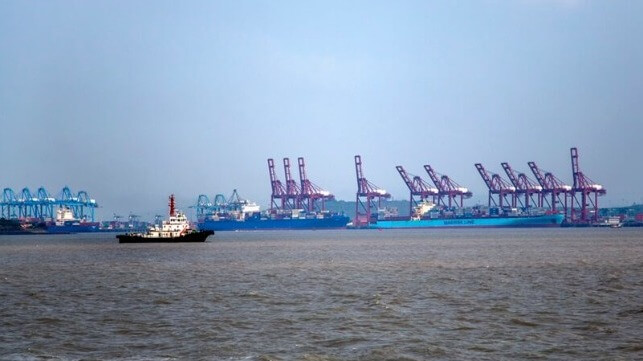India Launches Roadmap for Green Tugboat Transition

Last week, as part of its Green Shipping Policy, India's government launched new guidelines for the Green Tug Transition Program (GTTP). This initiative is set to phase out conventional fuel-based harbor tugs operating in major Indian ports and replace them with green ones powered by cleaner and more sustainable alternative fuels.
The Green Shipping Policy program was announced in May 2023 and consists of five major initiatives focusing on green shipping and digitization of Indian ports. One of the landmark initiatives under the program is the 30 percent financial support by the Ministry of Ports and Shipping for the promotion of green shipping in India.
The GTTP will be implemented in phases, with phase one scheduled to begin in October and continue until December of 2027. During this phase, four major ports - Jawaharlal Nehru, Deendayal, Paradip and V.O. Chidambaranar - will procure or charter at least two green tugs each. The designs and specifications of the tugs will be issued by the Standing Specification Committee (SSC).
However, Union Minister of Ports, Shipping and Waterways Shri Sarbananda Sonowal clarified that the first set of tugs will be battery-electric, with capacity to adopt other emerging green technologies such as hybrid, methanol and green hydrogen. The minister projected that phase one of the program will cost about $119 million.
“The GTTP is a pivotal initiative towards realizing our vision of a sustainable and green maritime sector in India. The program also strengthens our commitment to ‘Make in India’, promoting domestic innovation and manufacturing in the maritime industry,” said Shri Sarbananda.
The tugs will be built in Indian shipyards as part of the government initiative to support the domestic shipbuilding industry. This will also help to create employment opportunities.
In addition, the government has set a goal for all tugs operating in major Indian ports to transition to green fuels by 2040. This is in line with India’s Green Port Guidelines, which target a 30 percent reduction in carbon emissions per ton of cargo by 2030 and 70 percent by 2047.
No comments:
Post a Comment